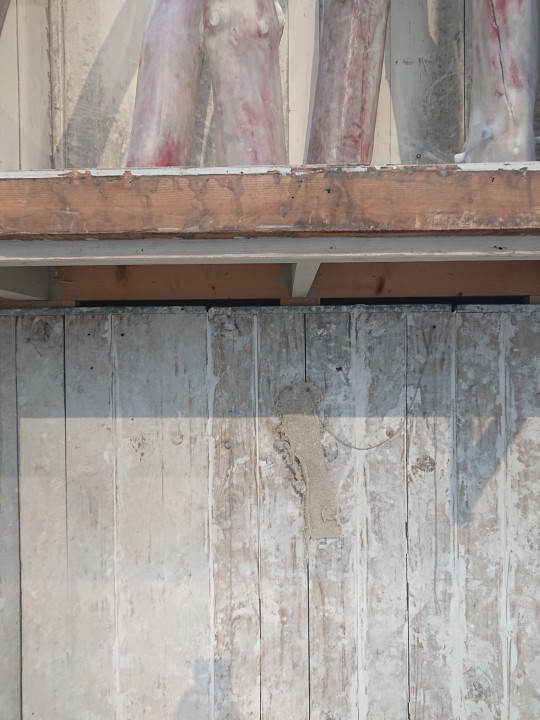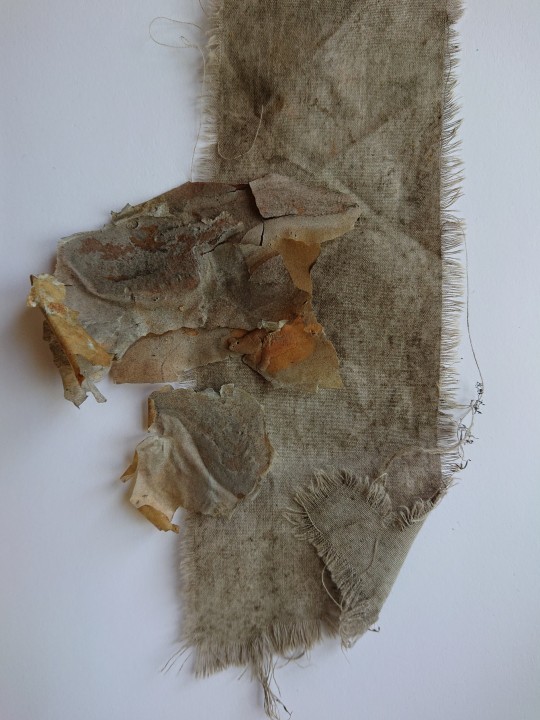#Slipvillan
Explore tagged Tumblr posts
Text




Happy to share that my folded-A4-publication on the island of Långholmen is now being shared with the public at Slipvillan (Stockholm, SE)
A text and more info on my AIR at Slipvillan in May, 2024, can be read on their website

#jorieke rottier#art#drawing#contemporary art#theneedtorecenter#reclaimedmatteroffeeling#tentoonstelling#air#slipvillan#stockholm#sweden#the netherlands#artistic exchange#ruimtecaesuur
3 notes
·
View notes
Text



feeling fibers (2024) is a multiple in an edition of 6 In May 2024, I will work as an artist in residence at Slipvillan on Langholmen, Stockholm (SE). During my preparations I found out about a statue on the island, an RVS paper plane. This immediately brought me back to when I discovered the paper boat in the hand of a bronze statue in my hometown Vlissingen (NL). I decided to create this multiple in order to enable you to support me during the residency. etching and ballpoint drawing on paper, folded dolly rope and thread
approx. 11x11cm multiple, edition of 6 €75,- per piece signed and numbered
0 notes
Photo


Larmoiment/Watery Eyes 2020. Teknik: Aluminium, linnetyg, gummi, järnplatta, vatten. Visat på FAHRENHEIT 101, Slipvillan, Kulturhus på Långholmen, Slipvillan. 11 konstnärers verk utomhus i trädgården resp inne i det fd Varvsarbetarhuset. Övriga utställare: , Maria Vaiedelich FR, Laetitia Deschamps FR, Luo Fei CN, Fredrik Strid SE, Lars Brunström SE, , Pi Eriksson SE, Richard Fåhraeus SE, Monika Masser SE, Kenneth Pils SE, Jannike Brantås SE
0 notes
Text


Happy to see my text on AIR Slipvillan (May, 2024) in print & online at magazine BK-informatie.
#jorieke rottier#slipvillan#air#artist in residence#stockholm#artist run#publicatie#text#tekst#artist#woman#ecology
0 notes
Text
AIR Slipvillan –Feeling Fibers
During May 2024, I worked as artist in residence at Slipvillan. Slipvillan is an AIR, exhibition venue and studio building run by artists Laetita Deschamps, Rikard Fåhraeus,Ina Rödén and a bunch of members. I am the third artist from ruimteCAESUUR(NL) to engage in an artistic exchange with Slipvillan: Giel Louws and Hans Overvliet preceded me.
Walking on Långholmen, a green island in the heart of Stockholm (SE), I connected with the place. A place to spend free time, to retreat, I thought. I feel watched through the windows of the apartment buildings across the street, by the people gathering on the little beach in the spring sun. This being-watched relates to the island in several ways: from the airing place in the former prison to the open-air theater, which has a similar floorplan. Both have a central spot, albeit with an opposite purpose: one to guard prisoners, one to be seen by the public. Time passes and the structures last.
The island is connected to the next island by two small bridges. Then there is Sweden's largest steel bridge, the Västerbron (western bridge), which seems to ignore Långholmen. From that bridge, you have great views of the city. Under that bridge, a trail of dust and rock breaks through the exuberant green of Långholmen. The green a gift of seeds that fell into the water from trading ships, germinating from the muck with which prisoners had to cover the island. Next to the bridge, a paper plane folded in stainless steel recalls the crash that took place there during an air show.

In my project proposal, I wrote that I wanted to explore the island by foot and work with the materials that wash up on Långholmen. I live and work along the Westerschelde, which leaves all kinds of partly untraceable material on the coast of Walcheren (NL). Working with washed-upmaterial is a given in my artistic process. During walks along the shoreline, I collect impressions and materials. My kids (baby and toddler) remind me of the importance of walking on a daily basis. They teach me to walk even slower and show that by using all senses, we experience ourselves as part of the environment. Already during the second walk on Långholmen it turned out that, there is no real question of ‘washing ashore’ here: the chestnuts I found, blackened by the brackish water, had fallen from a tree 30 meters away. The ropes I eventually used to create an outdoor sculpture most likely came from the shipyard near the find spot.
As Kierkegaard wrote somewhere: 'never lose your desire to walk. Every day I walk myself to well-being [...] I walk myself into my best thoughts.' Aquote I found in the book ‘The Songlines,’ by Bruce Chatwin about how among nomadic peoples and specifically among Australian Aboriginal people, their lives coincide with the landscape.
At one of Stockholm's many artist-run initiatives, Tegen2, I meet Anthony Frank Grahamsdaughter. As curator, she curated the current exhibit, which highlights hate crimes against Sami and other minority groups. She shares stories of her Native American family. They suffer from Western colonialism and racism until this day. She shows me work by Lena Stenberg, who wrote a book about the disruption of Sami life. When Nordic countries and Russia closed their borders to Sami in 1800and 1900, it was no longer possible to follow the reindeer throughout Lapland. This started a struggle for the right to live according to their traditions.

Before leaving for Sweden, I read "Braiding Sweetgrass" by Robin WallKimmerer. In it, she demonstrates and inspires through her embodiment of scientific, personal and native wisdom the importance of the relationship between man and land. There is much more to say about this but during the residency all of the above came together for me as one big question on the urgency of my relationship with my home-environment – and the role of the artistic process in this. This relationship, which I experienced as self-evident, is now confirmed as well as deepened and questioned. Something to continue to work on slowly and attentively.

During the Open Studio, I shared some of these experiences. Fellow artists Masoud Shashavari and Jannike Brantås started a wonderful conversation around artistic processes and the way a change of environment affects them. At some point Jannike asked ‘what rituals do you need in order to get to work?’ a question that still lingers.
To get an impression of the Stockholm archipelago, we took a 2.5-hour boat trip to the island of Grinda, in the heart of the archipelago. Every moment I expected to discover an "empty" horizon consisting of sky and water: every moment there was another island there. Mosses, one of the first life forms to take hold on bare rock (and be eaten by reindeer), eventually formed the work "horizon for anarchipelago (2024)" in Slipvillans’ studio. Grasses grow from the moss, their roots searching for a foothold among the rocks, just as the trees here do at large. Unlike at home, where sand and clay of the dikes desperately need tree roots and dune grasses to keep them in place – and our feet dry.

I try to capture these experiences in a map of Långholmen, linking various places on the island with my artistic attitude such as "collecting,""being alone," and "working with what is" from my work process. The map so gives an alternative impression of the island. It will be available at Slipvillan throughout 2024.
AIR Slipvillan served as a contrast experience for me with the "semi-islandlife" on Walcheren, where I live and work. It uncovered givens and made me embrace the unknown, taking in the environment and further releasing the pressure to make work. With a rock as support, it showed me that islands do not stand by themselves.

0 notes
Text




AIR slipvillan / went to see the work of berlinde deBruyckere at Artipelag today. got a bit of a different entrance to her work coming from my observations and collected material at Långholmen this week
#jorieke rottier#artist in residence#air#slipvillan#berlinde de bruyckere#artipelag#stockholm art week
0 notes
Text





AIR slipvillan / nice surprise to see the invitations for the Open Studio put up on my way to the studio :)
'grass-works' drying nice and crisp, and working with some pieces of rope I collected earlier.
planning to cover one window and use it as an 'notepad' to share some of my impressions with the public this Sunday
0 notes
Text




AIR slipvillan / we took a 2,5h boattrip to get an impression of the archipelago, the island Grinda being our destination (more or less halfway the archipelago)
surprisingly there was always (is)land in sight, no 'clear-water+sky'horizon as we are used to in Zeeland (NL)
also i'd never seen mosses grow so tall before
0 notes
Text


AIR @slipvillan / walk II



to the marina and paying a visit to the small museum of Långholmens' former prison/Spinhus, ending in the studio again
the work in the 4th picture is by C.M. Bellman (1740-1795) showing some of the area of Stockholm around that time, as shown inside the museum
there also was a mask ensuring anonymity for the accused during trial. they might prove to be innocent after all.
i relate this to my feeling of the island being watched by the city: by the windows of the big appartment buildings facing Långholmen
and my own 'need to recenter' by being alone, just going slow and enjoying the surroundings, floating my diy-boat in the marina
meanwhile in the studio things are going slow, too. with the open studio coming up on Sunday this feels a little tense, but it will work out anyway

1 note
·
View note
Text


AIR @slipvillan / walk II



to the marina and paying a visit to the small museum of Långholmens' former prison/Spinhus, ending in the studio again
the work in the 4th picture is by C.M. Bellman (1740-1795) showing some of the area of Stockholm around that time, as shown inside the museum
there also was a mask ensuring anonymity for the accused during trial. they might prove to be innocent after all.
i relate this to my feeling of the island being watched by the city: by the windows of the big appartment buildings facing Långholmen
and my own 'need to recenter' by being alone, just going slow and enjoying the surroundings, floating my diy-boat in the marina
meanwhile in the studio things are going slow, too. with the open studio coming up on Sunday this feels a little tense, but it will work out anyway

0 notes
Text


smallscale works while enjoying Slipvillan 's garden + slowly exploring some trails on the island. it's not that big so I wander around until I start recognizing places.
trying to imagine how the roots find their way into the relatively thin layer of soil, holding on to the rock, sometimes covering it. it's so different from the way we (in Zeeland, NL) 'use' the 'helmgras' and trees to keep the dunes and dykes together.
0 notes
Text






AIR Slipvillan / details from my first walk on Långholmen
0 notes
Text


AIR Slipvillan II / cedergrenska

0 notes
Text
On the road / Baltic Sea-green
1 note
·
View note
Text



AIR Slipvillan I
Before leaving home, a snailtrail in the garden (1) to remind us to slow down and meander a bit more than usual.
Repeated by the ferry Kiel-Göteborg (2)
(3) lighthouse upon arrival in Sweden.
1 note
·
View note
Text

AIR-essentials
ready for the trip to Långholmen (SE)
0 notes